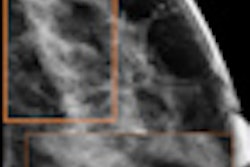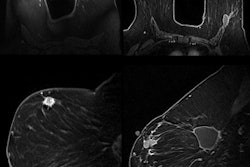Dear AuntMinnie Member,
A new study published this week claims that new technologies such as digital mammography and computer-aided detection (CAD) are driving breast screening costs higher in the U.S. government's Medicare program -- despite limited evidence of their effectiveness.
Published on Monday in JAMA Internal Medicine, the study offers what it calls one of the first looks at the economic side of Medicare's breast screening program, revealing that just over $1 billion a year is spent on breast screening in the federal program. The problem, according to the article, is that some $410 million of this spending is for screening of women older than 75, for whom screening isn't recommended by most clinical guidelines.
The study found wide variations in screening costs, and it connected higher expenses to regions where full-field digital mammography and CAD were adopted more extensively.
Does the study open up a new front in the war over breast screening? Possibly, but it also highlights the need for more personalized approaches to mammography, as opposed to the "one-size-fits-all" approach we're currently using. Read more by clicking here, or visit our Women's Imaging Digital Community at women.auntminnie.com.
What is PQRS, and why should you care?
Chances are you don't wake up every morning thinking about how you're going to comply with Medicare's Physician Quality Reporting System (PQRS) program. But you might want to give the program a second thought, according to a new article in our Imaging Leaders Digital Community.
That's because radiologists (and other physicians) could be hit with financial penalties in the next few years if they don't start participating in the program, which is part of Medicare's effort to get doctors to move toward a healthcare model driven by patient outcomes and quality rather than fee-for-service practice.
The U.S. Centers for Medicare and Medicaid Services so far has rewarded physicians with financial incentives for adopting PQRS reporting, but the incentives will turn into penalties starting in 2015. So far, three-quarters of radiologists aren't participating in the program, but that's still a higher level than most other specialties, according to our article. Learn more by clicking here, or visit the community at leaders.auntminnie.com.
While you're there, check out another article in the community that takes a look at inpatient imaging utilization. The authors found that use of inpatient imaging has lagged the overall growth of imaging, perhaps reflecting a shift of imaging to the outpatient setting. Read that article by clicking here.



















